BenQ MA32OU review: This 4K monitor is made for your Mac
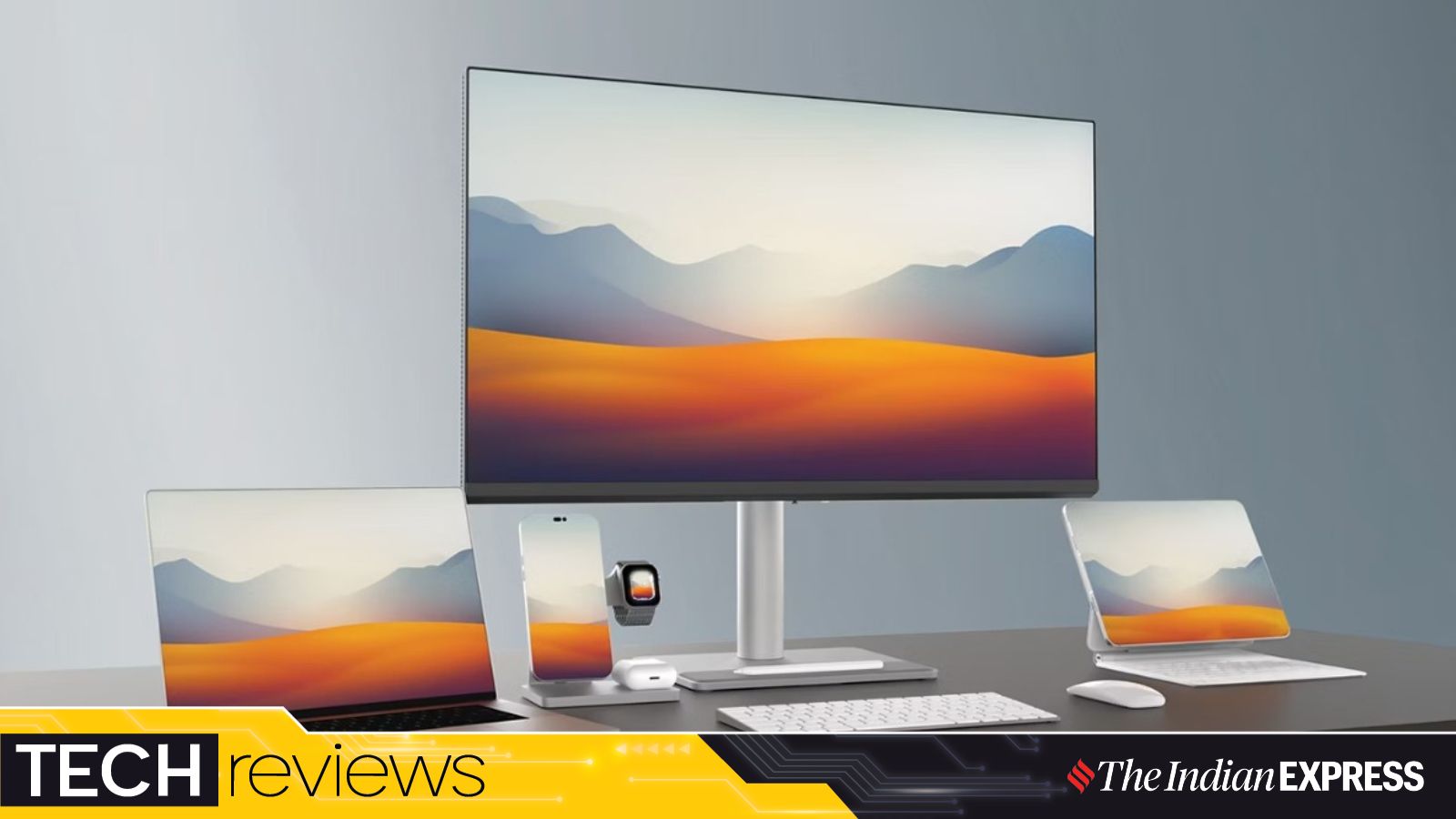
I spend a lot of time in front of a computer. In fact, I frequently switch between a variety of devices, jumping between my MacBook, Mac Mini, and iPad throughout the day. Although all of these products are complete in themselves, one thing I haven't been able to get right is finding a monitor that works well with Apple devices.
I have been looking for a Mac-friendly monitor that's easy to set up, offers the right connectivity options to enhance the experience, and even helps reduce neck strain. Just when I had almost forgotten that such a monitor could exist, BenQ approached me to review its new MA320U, a monitor primarily designed for use with Macs.
The MA320U is a 32-inch 4K display that offers expansive screen real estate, impressive detail, and excellent color reproduction. The result is a versatile monitor that works seamlessly with devices like the MacBook Air and Mac Mini. Here's my review of the BenQ MA320U.
What: BenQ MA320U | Price: Rs 51,998
Clean design and aesthetics
The MA320U takes design cues from Apple products, aiming to match their aesthetics, though the plastic build quality doesn't quite deliver a premium feel. That said, the monitor features clean lines and a minimalistic look. It also comes with an excellent stand, offering some of the most flexibility you will find in any monitor, and the entire setup takes just seconds. In contrast, Apple charges extra for the stand with its high-end Studio Display.
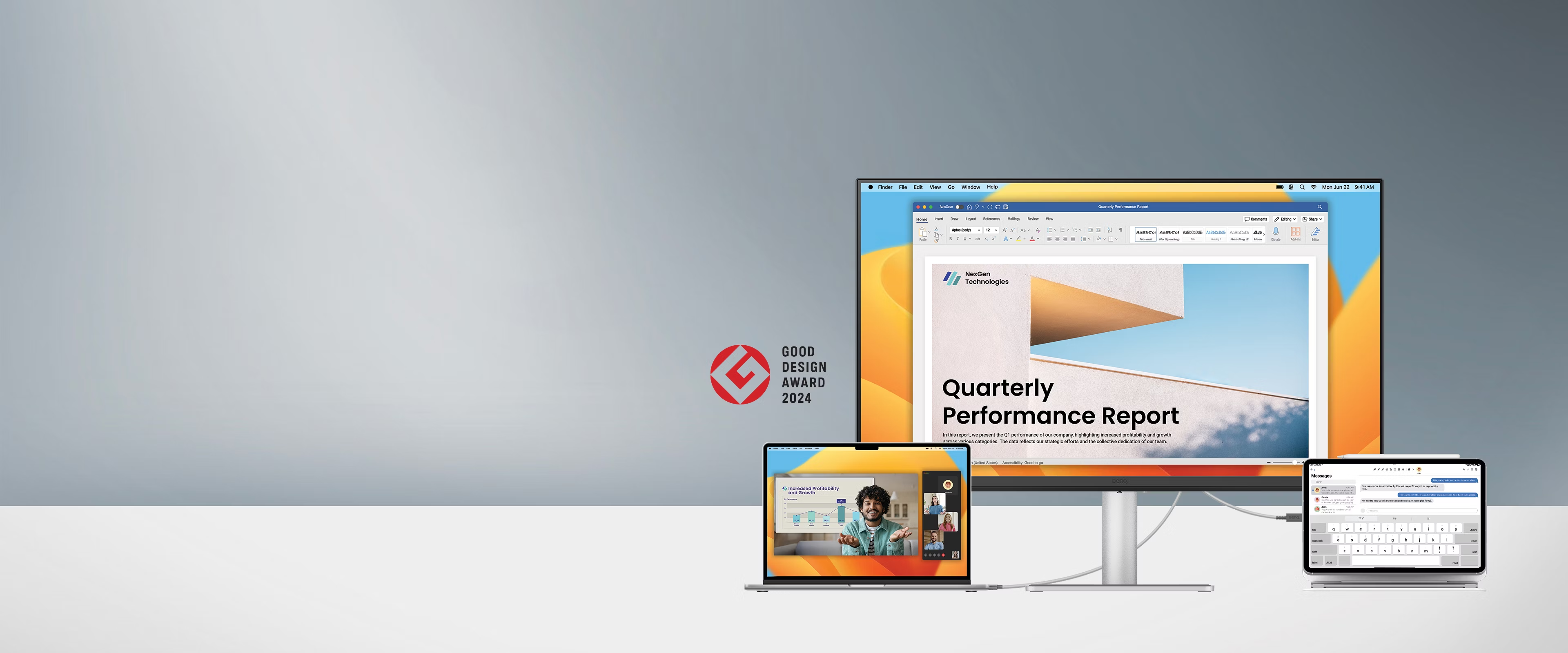 The MA320U takes design cues from Apple products. (Image: BenQ)
The MA320U takes design cues from Apple products. (Image: BenQ)
The MA320U's stand also allows the monitor to rotate 90 degrees into an upright (portrait) position, which can be useful for graphic design or photo-editing work. I found the inclusion of a rubber patch on top of the monitor stand to be an interesting design choice, as it lets you place MacBooks, iPhone or AirPods on it without worrying about scratches. I wish the rubber pad had a built-in wireless charging, which could be a great addition.

The main controls are located at the bottom, with the power button placed separately. All display outputs are positioned on the lower-left side at the rear of the monitor, including a pair of HDMI 2.0 ports, one of the two USB-A ports, and two USB-C ports – the second of which can supply up to 90 watts of power to a connected device, such as a MacBook Air or MacBook Pro. On the right side of the display chin, you will also find the second USB-A port alongside a headphone jack.
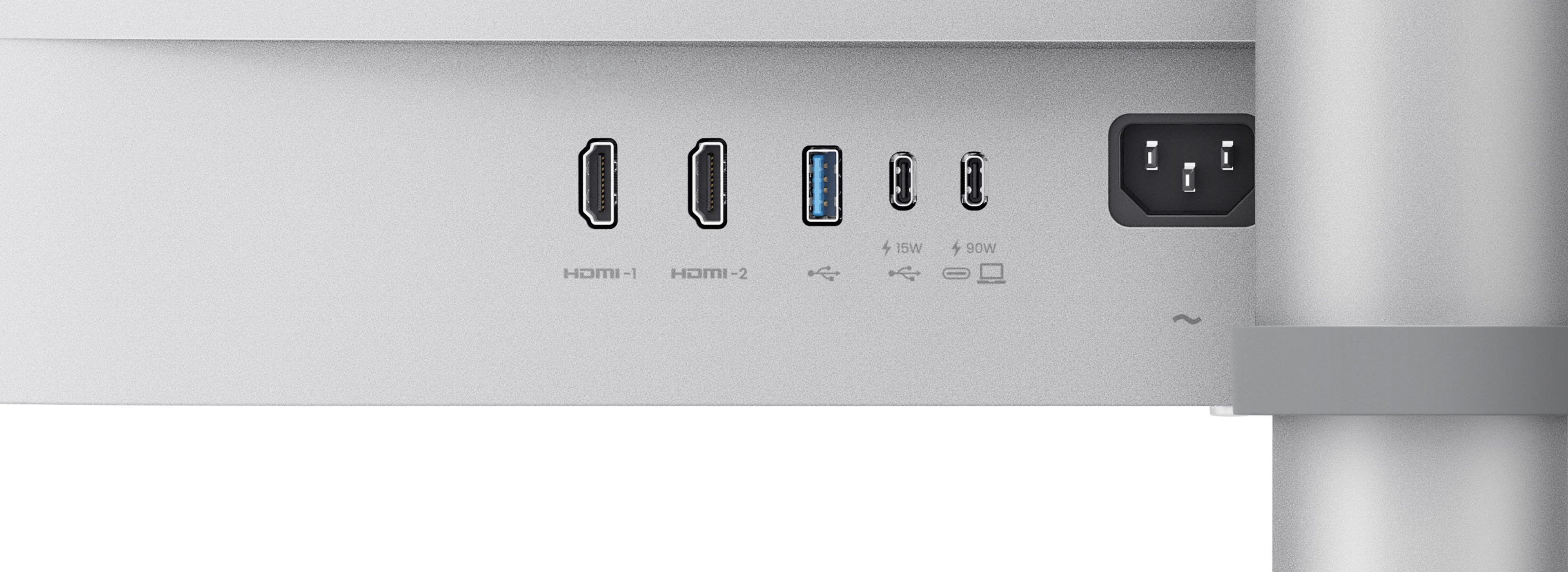 All display outputs are positioned on the lower-left side at the rear of the monitor. (Image: BenQ)
All display outputs are positioned on the lower-left side at the rear of the monitor. (Image: BenQ)
There are no dedicated DisplayPort connectors, but one of the USB-C ports supports DisplayPort for video input when connected to a Thunderbolt port on your Mac. The MA320U has also built-in speakers, but they are quite weak. I prefer using my Bose computer speakers instead.
Bright and colourful display
The 32-inch 4K (3840×2160) screen is a pleasure to look at, offering good contrast and brightness. Although it doesn't feature an OLED panel, and therefore lacks the rich, high-contrast visuals OLEDs are known for, it does support HDR, which adds great impact to the viewing experience.
I found the ‘M-Book' mode to be a clever integration, designed to match the colours of a MacBook display. The monitor also supports 99 per cent of the sRGB colour space and 97 per cent of the DCI-P3 standard, making it suitable for basic graphics work, photography, and video editing. Essentially, this monitor is great for semi-professional use. However, creative professionals may look elsewhere, and understandably so, as they require more precise colour calibration and advanced controls.
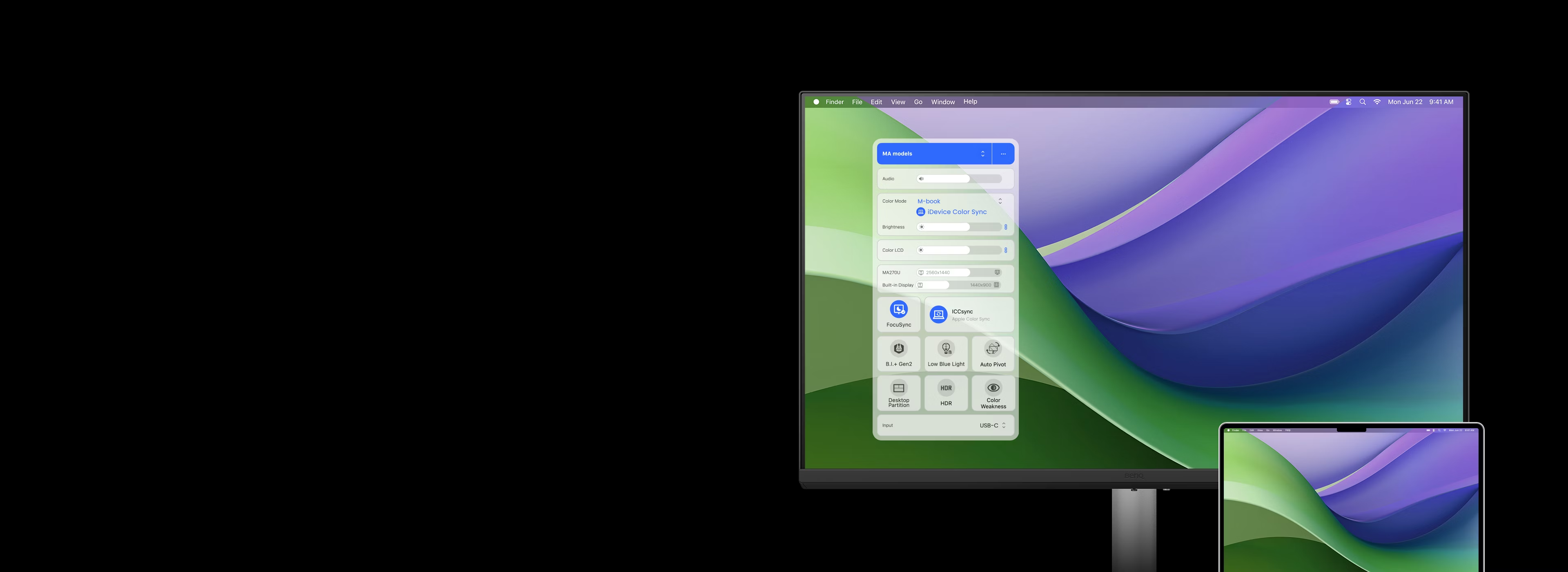 Mac-like simplified settings with BenQ Display Pilot 2 software. (Image: BenQ)
Mac-like simplified settings with BenQ Display Pilot 2 software. (Image: BenQ)
BenQ also offers app support through its Display Pilot software, which is compatible with both Macs and Windows PCs. The app provides access to monitor controls that are otherwise inaccessible through the on-screen display (OSD), allowing you to quickly adjust settings such as the colour profile or toggle HDR on and off.
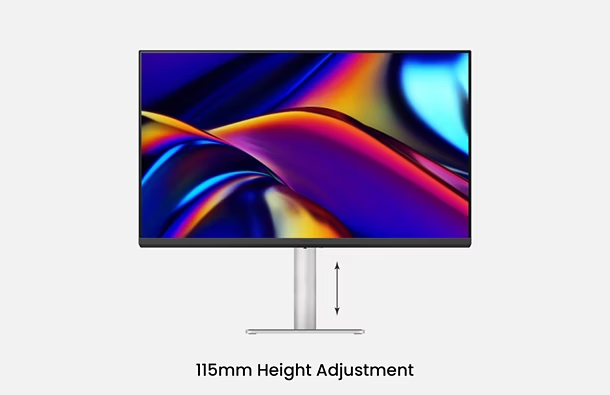 The BenQ monitor offers more freedom with multiple angles and height flexibility for a better viewing experience. (Image: BenQ)
The BenQ monitor offers more freedom with multiple angles and height flexibility for a better viewing experience. (Image: BenQ)
Although the app is useful, it does require some technical knowledge to understand and choose the right colour profiles and HDR settings. I don't think the average user would need this app, but for those who are into photo or video editing, it could be a valuable addition.
Should you buy the BenQ MA320U?
The BenQ MA320U is designed first and foremost as a Mac-centric monitor, and the fact that it comes with pre-tuned colours by default is a great feature. It offers ample brightness, supports 4K resolution, and includes HDR as well. That said, the monitor isn't exactly budget-friendly, but it's still quite affordable compared to the Apple Studio Display. A monitor is a long-term investment, and I suggest always considering factors like display technology, size, weight and mounting options, ports, and overall connectivity before making a decision.
